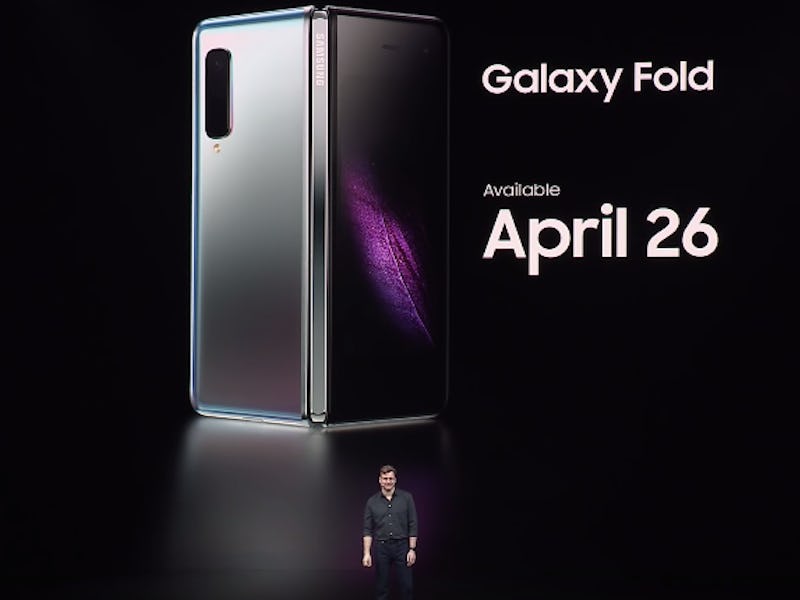Samsung Foldable Phone: Response to Failures Leaves Reviewers Stunned
Samsung wants to be first to market.

Samsung still plans to launch its folding smartphone in eight days’ time despite serious concerns that the product is prone to breaking. The Galaxy Fold costs an eye-watering $1,980, nearly double the price of Apple’s iPhone XS Max, but reviewers have struggled with flickering screens, black pixels, and in some cases complete failure.
In a statement provided to Inverse, a Samsung spokesperson said:
A limited number of early Galaxy Fold samples were provided to media for review. We have received a few reports regarding the main display on the samples provided. We will thoroughly inspect these units in person to determine the cause of the matter.
Separately, a few reviewers reported having removed the top layer of the display causing damage to the screen. The main display on the Galaxy Fold features a top protective layer, which is part of the display structure designed to protect the screen from unintended scratches. Removing the protective layer or adding adhesives to the main display may cause damage. We will ensure this information is clearly delivered to our customers.
The company also confirmed to Wall Street Journal reporter Joanna Stern that “there are no changes to the plans — we are launching in the U.S. on April 26.”
The decision to press ahead has concerned some reporters. Tom Warren, senior editor for The Verge, warned on Twitter that “Samsung will regret launching the Galaxy Fold like this,” adding that “there are significant hardware issues here” and “for a $2,000 phone, this is clearly not ready for consumers.” Dieter Bohn, the publication’s executive editor, reported Wednesday that his unit developed a small bulge in the fold after just one day.
“Good luck with that,” wrote technology reporter Myriam Joire.
Samsung’s device showed promise when it was unveiled at Mobile World Congress in February. It has a 4.6-inch screen that switches to a 7.3-inch screen when unfolded, powered by a 4,380 mAh battery and a seven-nanometer Qualcomm Snapdragon 855 chip. It has 512GB of internal storage and supports 18-watt fast charging. It comes in four colors, packs six cameras, and its large screen enables the use of three apps at once. It competes with the Huawei Mate X folding phone that costs $2,600.
Unfortunately, soon after the preorders went live on April 11, reviewers noticed issues. Bloomberg’s Mark Gurman, YouTuber Marques Brownlee and CNBC’s Steve Kovach all joined Bohn in reporting flaws. In the case of Gurman and Brownlee, the two admitted peeling back what seemed like a screen protector only to discover it was an integral part of the phone’s operation.
Others noted that the phone warns people to not peel off the protector.
The company has faced issues before with its devices. In 2016, Samsung had to cancel the Galaxy Note 7 after several reports of the device catching fire. The Galaxy Note 9 faced dead zone issues with the touchscreen last year. But in its rush to beat Huawei and others to market with a folding phone, Samsung may have moved a touch too fast.
Additional reporting by Danny Paez.